FAQ
- Bolivia climbing questions
-
Mallorca island and rockclimbing
- What are main specifics of rockclimbing trip to Mallorca
- Mallorca island impressions
- Rockclimbing safety Spain
- Mallorca climbing accommodation
- What season is possible for rockclimbing in Mallorca
- Transport accessibility of climbing sectors in Mallorca
- Active vacation in Mallorca
- Saint Anthony night in Mallorca
- Peru climbing questions
- Gear reviews
-
Safety in the mountains
- How NOT to climb the summit?
- Mountain navigation
- At the limit of possibilities
- Mountain thunderstorm
- Solo ascents and mountain trips alone
- Mutual responsibility in mountaineering
- Safety illusions in the mountains - a rope
- Independent team of two
- Mountain troubles
- Psychological problems in the mountains
- Health in the mountains
-
Elbrus questions
- Elbrus climbing gear
- Climbing Elbrus with children?
- Mount Elbrus location?
- Elbrus logistics
- How to get to Mount Elbrus?
- Elbrus German airfield?
- Elbrus difficulty grade
- 5 points beginner must know about Elbrus
- How to prepare for Elbrus?
- Are there avalanches on Mount Elbrus?
- Climbing Elbrus solo?
- Seasonality of climbing Mount Elbrus
- How much time climbing Elbrus takes?
- Clothes for Mount Elbrus?
- Pressure at the top of Elbrus?
- Elbrus air temperature
- Elbrus sightseeing
- How much to climb Elbrus
- Gear questions
- Mountaineering questions
- Mountain climbing training
-
Rockclimbing questions
- Rockclimbing gear
- How to choose your first rockclimbing shoes
- The hand power in roclcimbing
- What is Rockclimbing tours
- Non olymnic rockclimbing
- What is rockclimbing?
- Where do you climb?
- Where and when we organize our rockclimbing programs?
- What is rockclimbing?
- Rockcliming program class?
- Climbing motivation
- Horse riding tours
- Iceclimbing questions
-
Questions on the alpine programs
- What to climb in Morocco?
- Weekend summit climb
- Georgia 2023
- Pico Aneto - what is that mountain?
- Mountain programs format
- Mountain climbing food ration
- Queries on the alpine program climbing Mount Bazarduzu
- Queries on the Kamchatka alpine program climbing
- What is combined program?
- What is sightseeing program?
- What is pilot program?
- What programs you have of the medium complexity level?
- Basic expedition rations
- Prices for the mountain climbing programs
- Queries on the Mountain Course in Adyl Su valley
- Program complexity?
- Questions about MCS AlexClimb
- Questions related to trekking programs
What is Aid climbing?
English version of the text for mobile device
Versión del texto en español para dispositivos móviles
MCS AlexClimb Mountaineering School
What is Aid Climbing, what is it for and who needs it?
The technique of Aid climbing has been used in mountaineering since its very beginning - a human's desire to go up to the heights has always been limited by his physical capabilities. But cunning and ingenuity always helped to overcome this limitation.
Most likely, the very first climber to use the Aid climbing technique was some mountain hunter who cut down a tree in order to lean it against a vertical rock to get to his prey.
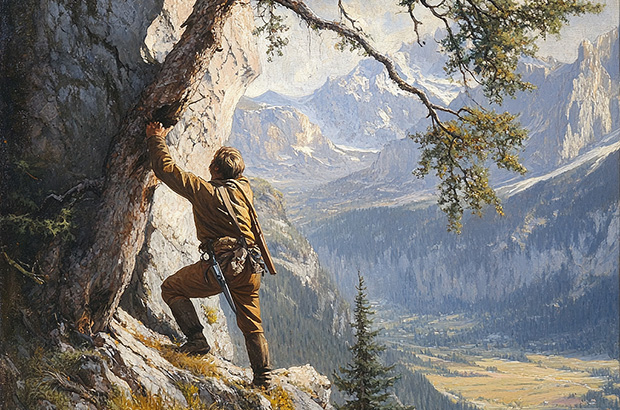
First attempts to use the Aig climbing technique
Among the most famous mountaineering routes climbed using the Aid climbing technique, it is certainly worth mentioning the Compressor route to the top of Cerro Torre in Patagonia - this is an absolute classic of Aid climbing.
Without going into a moral assessment of the situation, I can say that, unfortunately, this route was destroyed after a successful "clean" free climbing ascent of this line.
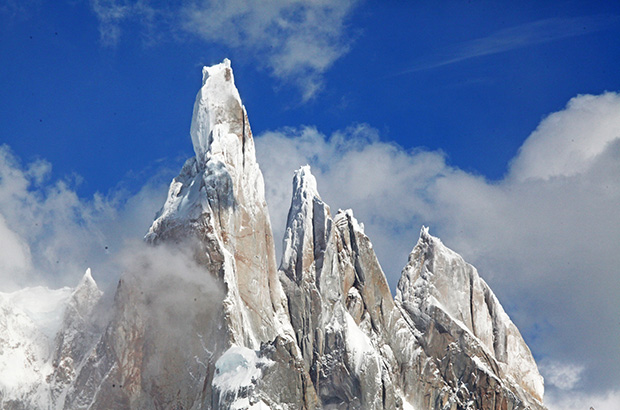
Cerro Torre summit group - all the routes here require mastery of the AID technique
The most difficult ascents in high mountains - Mount Everest, Lhotse, the South Wall of Communism Peak, would be impossible without the widespread use of Aid climbing techniques.
Many classic routes of the highest category of difficulty in the Caucasus, including famous Mount Ushba, were conquerred in the 1960s-70s exclusively using Aid climbing techniques. Also, using this technique, new routes to Mount Ushba appear in our days - along the smooth granite verticals.
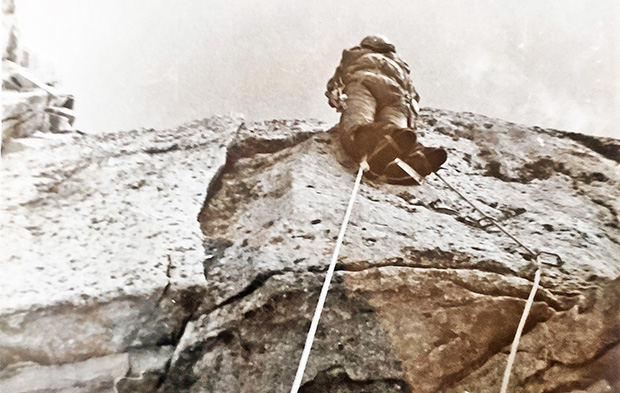
Using Aid climbing techniques when climbing Ushba in 1972
Using special climbing techniques and appropriate gear for organizing aid's, you can climb any vertical surface - be it a steep rock wall in the high mountains, or the overhanging roof of a giant cave on the seashore, or even a smooth concrete wall of some engineering structure.
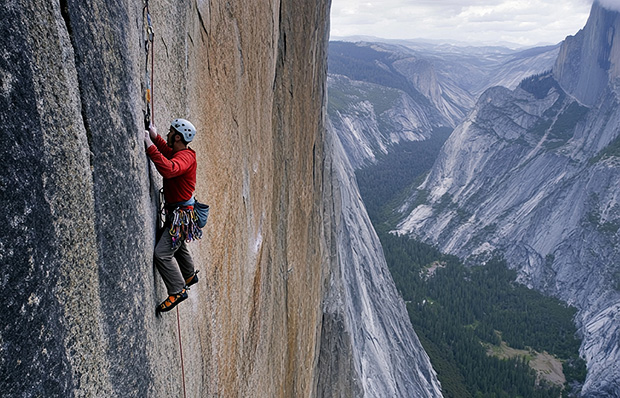
Aid climbing some extremely difficult rock routes in Yosemite, USA
The only limitation for using Aid climbing is insufficient fragile surface or objective danger of the route line.
Aid or free climbing?
An alternative to Aid - free climbing, cannot always be used for climbimg difficult pitches on mountaineering routes - due to their objective complexity, weather conditions, or the tactical plan of the ascent.
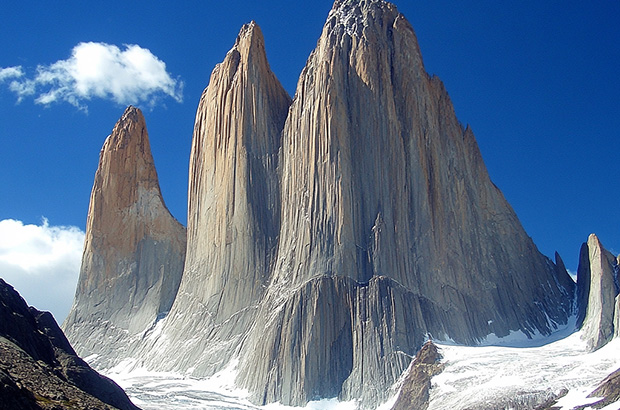
The rocky verticals of Patagonia are a paradise for the strongest climbers and mountaineers
However, with the developing of the sports related to the mountaineering - rock climbing and ice climbing, some questionable trends start to appear in the mountaineering. These trends distorted the basic concept of mountaineering - to overcome an obstacle and achieve the goal in any safest way.
The aesthetics of free climbing in the mountaineering today is an absolute priority over the technique of aid climbing. An alpine route climbed in a free style is valued much higher, as well as the time for climbing it gets significantly reduced.
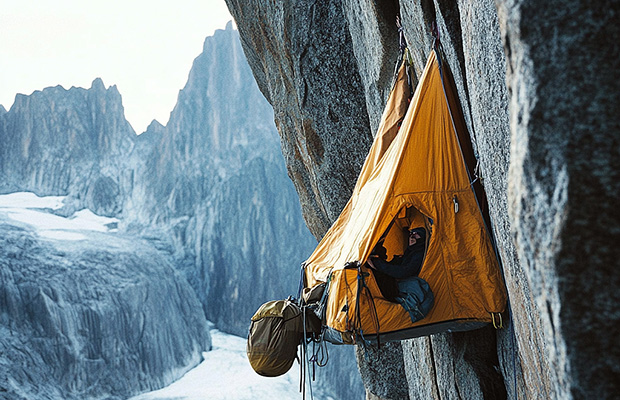
Multi-day Big-wall ascent with a hanging bivouac to the top of Mount Fitz Roy in Patagonia
From the mountaineering tactics point of view, on the difficult alpine ascent route it is always more advisable to move by free climbing as, with sufficient physical fitness of the participants - it is faster and safer, since the speed of passing the route in the mountains is one of the risks reducing factors.
However, the climbing speed should not go beyond reasonable safety limits. Sometimes the objective complexity of the pitch, or some other factors (weather, condition of the participants) make free climbing impossible or too dangerous. If that not become a reason for completing the route and rappel down, the moment comes when it is necessary to switch to aid climbing.
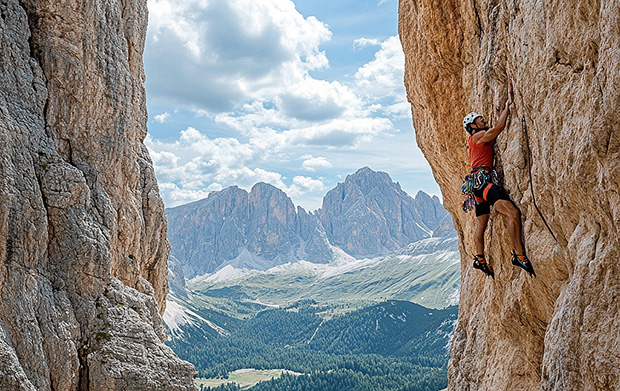
On the alpine rock climbing route in the Dolomites
From my own experience, I can say that this moment is far from being obvious, since you always want to pass a difficult pitch as quickly as possible. But such haste can lead to an accident.
Also, there is a number of dangerous prejudices which are associated with the use of aid climbing techniques. Quite often that push people to irrational actions and incorrect tactical decisions.
Obviously, an attempt to free climb a highly complex pitch with an insufficient number of belay points unreasonably increases the risk of a fall. It is worth remembering that in mountaineering, unlike rock climbing, a fall is always an accident.
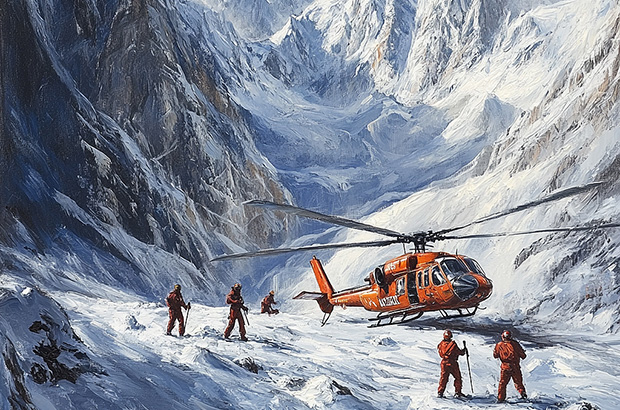
The romance of mountaineering ends where rescue begins
An example of such prejudices is the negative assessment of the use of belay lanyard for fixation on an ice axe when leading on a classic ice climbing route (this also relates to the aid climbing).
In the modern concept of ice climbing, this technique is considered almost a disgrace, although it provides high-quality positioning of the belay point and rest for the leader during the setting an icescrew.
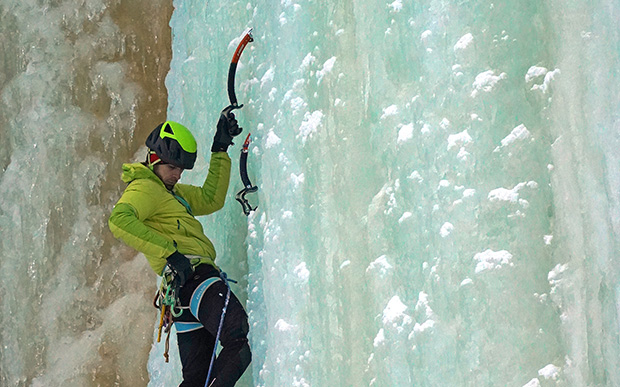
Apart from the very questionable aesthetics, there is no point in such a self-limitation
With such an approach, the most important basic safety principle fades - classic ice climbing is no different from mountaineering in terms of risk. It is unacceptable to instill in this activity the aesthetic norms inherent in the much safer sport rock climbing.
All the logic of the mountaineering safety says: setting a belay point on the steep ice, hanging on one hand, negatively affects the quality of this point, tires the leader and, indirectly, can cause a subsequent fall, which will inevitably lead to serious injury.
Nevertheless, many "athlete ice climbers" adhere to or, which is worse, promote this method - setting an ice screw, holding on to the ice tool with one hand.
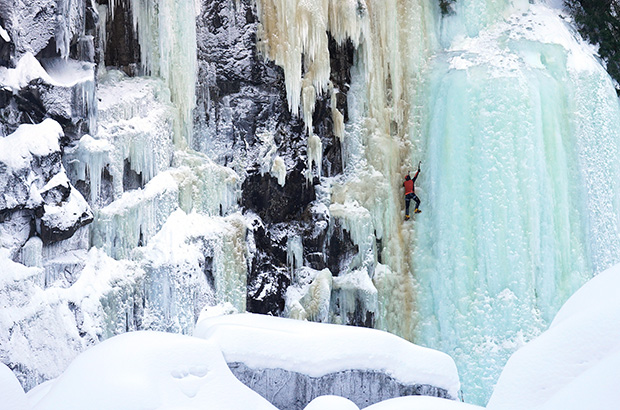
Classic ice climbing on cascades in Norway, Buskerud district
Who needs to train the aid climbing technique skills? - spoiler: technical mountaineering guides, industrial climbers, mountain rescuers.
Certainly, at the initial stage of practicing mountaineering, preparing for ascents to popular commercial routes like Mont Blanc, Mount Elbrus, Mount Kazbek, even Everest or K2, when practicing rock climbing or sport ice climbing, there is no need to waste time learning Aid climbing techniques.
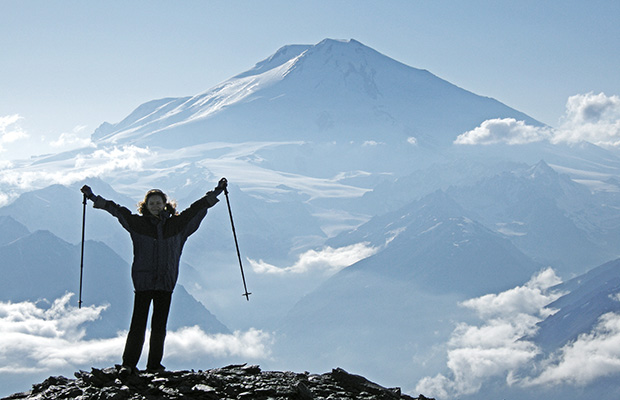
Most classic alpine mountaineering routes require only endurance and good coordination
Aid climbing is a very narrow professional and specific technique that is required only if your demands for the complexity of mountaineering routes reach the highest level.
At the same time, if in your mountaineering career you reach such level, then you will already have all the necessary skills and training to confidently pass from free climbing to the Aid climbing technique.
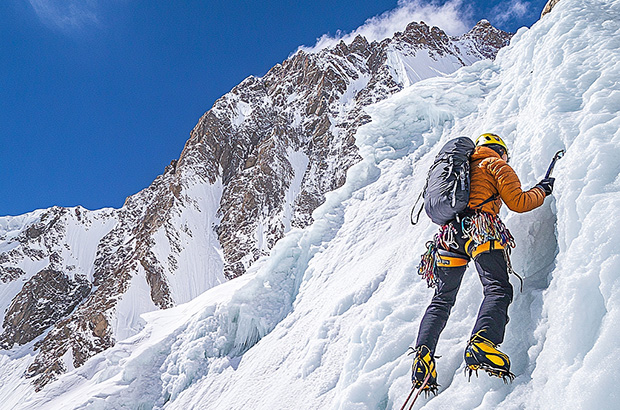
Classic mountaineering ascents of medium or even high difficulty do not always involve obligatory using of the Aid climbing technique
For beginners in the mountaineering, coordination and general physical training will be much more productive and useful. Such approach will significantly expand the horizons of safe free climbing, make it possible to climb the routes of medium difficulty which do not require any special skills in working with Aid's.
What is Aid climbing training?
In a broad sense, the use of any technical devices for climbing the vertical surface, without using its relieve, can be defined as Aid climbing technique. Moving upward, hanging from one fixation point to another, is the base of the Aid climbing technique. Such an exercise is available to any physically trained person, even for a beginner familiar with the basic techniques of rock climbing.
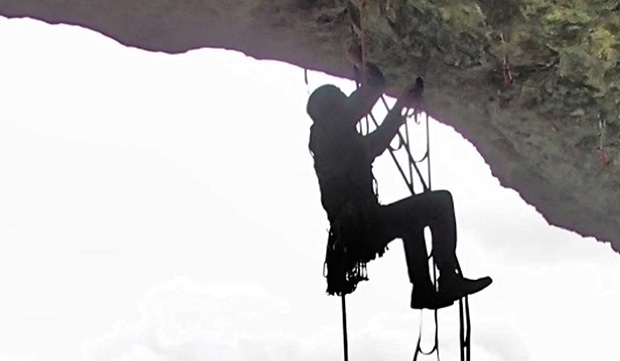
Passing a rock cornice using the Aid climbing technique hanging on the existing anchor belay points
But the further development of the Aid climbing technique is associated with the independent organization of fixation points (both stationary and removable). Depending on the nature of the climbing terrain, this is a task of a much higher level of complexity, which requires confident skill in using a variety of mountaineering safety equipment.
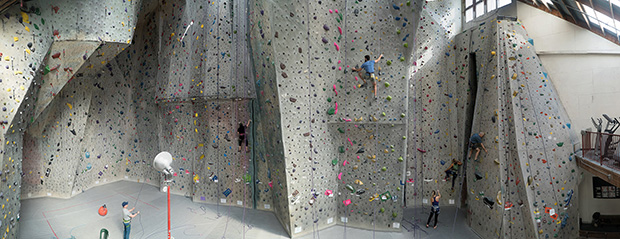
Indoor climbing gym with a special module for practicing the Aid climbing technique
Since the Aid climbing technique is a narrowly specialized, professional direction in technical mountaineering, special indoor simulators for practicing this technique are rare. However, some large modern rock climbing centers have special modules for training aid climbing techniques.
On the such climbing modules, with fixed top belay, one can try to climb the artificial surface using sky hooks, nuts, friends and similar gear.
Author of text and photos - Alex Trubachev
Your professional mountaineering, ice and rock climbing guide
MCS EDIT 2025
Our Principles
AlexClimb Rule #1 - Safety First
From the very beginning of our activity, here nearly 16 years, the first Principle of work of School of mountaineering and rock-climbing of MCS AlexClimb is the Safety Priority. On the basis of this Principle all process of training is based, all programs and rounds are developed and carried out only within this main principle. We consider that at professional approach to development of programs, at personal discipline and correctly put motivation - occupations by mountaineering and rock-climbing are COMPLETELY safe. And from the return - all troubles and accidents in our sport come from nonprofessionalism, from ignorance or neglect by elementary standards of safety, from irrational motivation, from revaluation of own forces and opportunities. All these prerequisites we COMPLETELY EXCLUDE in our work - ours Rock-climbing, Ice climbing and Mountaineering are based on one Principle - the Safety Priority. In rock-climbing, mountaineering and ice climbing, the Priority of Safety of MCS AlexClimb-is your personal security and comfort irrespective of, than we are engaged - we train muscles and we work technology of the movement in the sports hall and on the rock climbing wall, we make the way through snowstorm to top or we relax on golden sand of the Caribbean beach after hot day of trainings on rocks. The Safety priority - the main credo of School of mountaineering and rock-climbing of MCS AlexClimb.
AlexClimb Rule #2 - Leave No Trace
Closely interacting with Nature, working with the active programs in mountains, woods, lakes and rivers, we perfectly understand the importance of carefull and respectfull bahavior towards the Nature, for its resources. From the very beginning of our outdoor-activity we adopted rules of Leave No Trace technique - the standard of behavior of the person accepted in all the civilized world in relation to environment and especially - to the wild nature. After all on the relation of people to the nature near which they exist, itself can draw dalekoidushchy conclusions on the relation of these people to... Where and as we didn't travel - we don't reserve any garbage, we try to reduce whenever possible our influence on environment to a minimum. We clear earlier zagryazyonny tourist parking of the left garbage, we take out and we take out to utilization places that to us other people left there. We consider that only thus, at personal individual consciousness of each citizen, each tourist, climber or autotraveller, we will be able to keep the nature surrounding us in its state, natural, suitable for life, - in it pledge of the healthy future for ourselves and our children.





